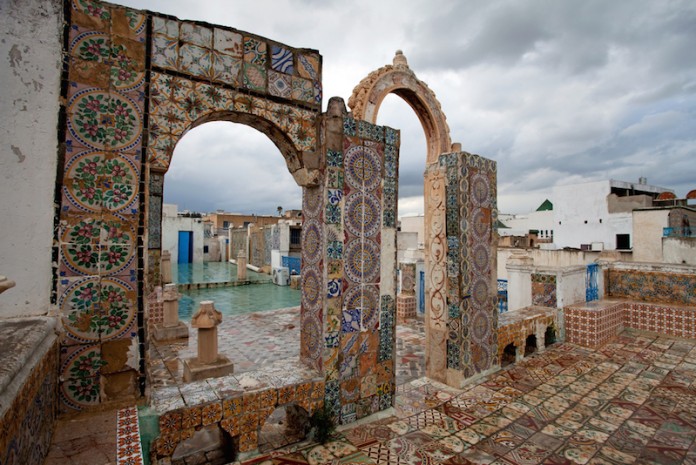African, Mediterranean and European, Tunis is a cosmopolitan and multicultural city, but also provincial and intimate. It is a spectacular reality where time seems to have stopped and as many cities of North Africa has two hearts, two opposing souls integrated and integrated with each other.
 On one side there is the Arab Medina with its sprawling streets, the souks, the houses with the wide doors with particular decorations and on the other the new city with its neat grid, the wrought iron balconies, the cafes, the traffic and palm trees.
On one side there is the Arab Medina with its sprawling streets, the souks, the houses with the wide doors with particular decorations and on the other the new city with its neat grid, the wrought iron balconies, the cafes, the traffic and palm trees.
And then it becomes beautiful to get lost through the maze of narrow, winding streets that, at first sight, may seem confusing, but in a short time they are fun, as they allow you to discover hidden corners, ancient palaces with marvelous enrichments or minarets of mosques that are scattered around the city.
And when all this has enchanted you can go to the big avenues or go into the Bardo district. Where once there was the countryside and the noble residences now a sort of suburb has been created. On the way you will observe the real life of the Tunisians: the bars full of men sipping tea, the butchers with the meat hanging on display and the small shops in the neighborhood full of merchandise of all kinds.
The idea that we have is that the situation is apparently calm. People talk willingly, children cackle in the streets, women – with veil and without – walk together, the boys continue their lives. But then you get to the Bardo Museum where to welcome you there are sentinels armed and that tombstone with 22 names written above.
The Museum was the site of an attack that shook Tunis and the whole world a month ago. If you enter the structure, with magnificent architecture, in these days you are struck by the silence of the rooms and the quiet steps of the few visitors.
